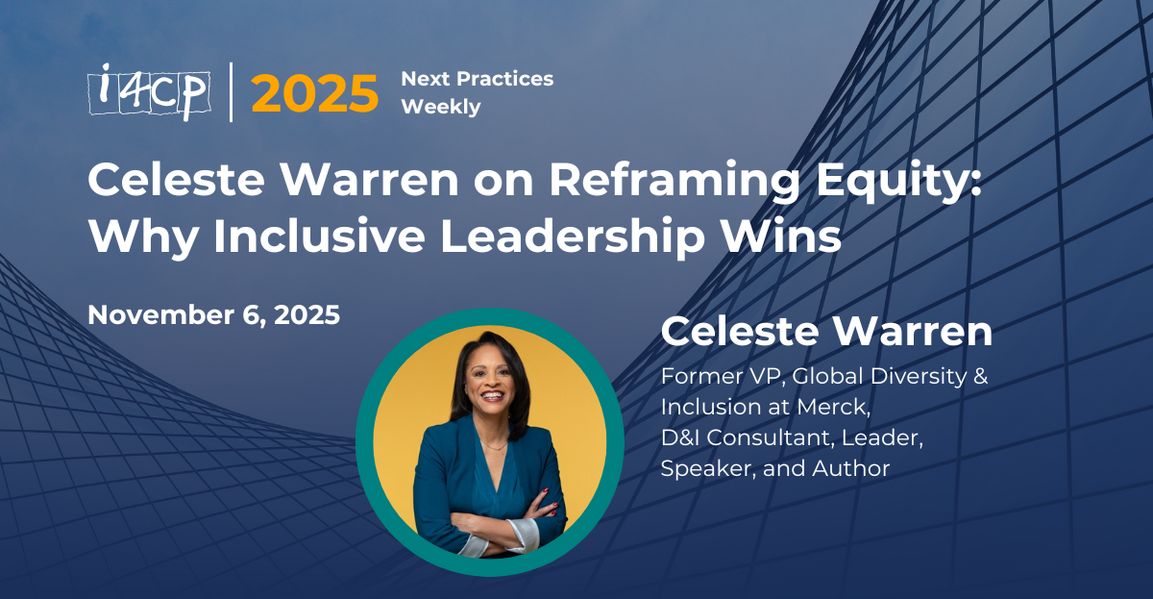Talent & Learning Leaders: Organizations are Merely Guessing in the War for Talent
The Talent & Learning Next Practices Monthly series provides a forum for the Talent and L&D leadership community to come together to discover and advance next practices. Each month, you’ll hear from executives in Talent and/or Learning from some of the largest and most respected organizations in the world, learn about the latest i4cp research, and share and receive ideas from your peers.
For this month's conversation, i4cp Senior Research Analyst Tom Stone presented some of the key findings from i4cp's Accelerating Workforce Readiness study, and he and i4cp CEO Kevin Oakes led a discussion with participants on this topic. Workforce readiness is, in essence, having the right people, with the right skills, in the right roles, and at the right time and place, in order to advance the organization’s strategy. Unfortunately, many organizations are merely guessing when it comes to key aspects of that equation, especially when it comes to knowing the skills and capabilities of their employees. Here are some highlights from the meeting:
- i4cp's Workforce Readiness survey was conducted in early June Survey conducted in early June, and had over 1,300 participants, including over half from organizations with 1,000+ employees (all data shared below is from those larger companies).
- Only 30% believe that their organizations’ workforce currently has the skills necessary to advance their strategy over the next 1-3 years. This belief was over 2X higher among those from high-performance organizations than low-performers. (i4cp measures market performance according to profit, revenue, market share, and customer satisfaction over a five year period.)
- Finding: Organizations largely don’t know the skills and capabilities of their current employees.
- 53% of survey participants indicated that insufficient data about the current skills and capabilities of the workforce is a primary barrier to workforce readiness.
- Only 22% indicated their organizations were effective at breaking down jobs into smaller tasks and skills.
- Only 18% said their organization has a skills database/inventory that includes all employees (10%) or critical roles (8%).
- 27% agreed with the statement that LinkedIn knows more about their workforce than their organization does.
- High-performance organizations are 2.5X more likely to go beyond work skills, job experience, credentials, etc., and include personal interests / hobbies of employees in their workforce skills database. Think of these as indicators of potential talent moves, adjacent skills, and ways to engage and retain employees.
- Oakes noted that often times leaders pigeon-hole people into the jobs that they were hired for, and don't retain the information on their broader skills/etc. gathered during their hiring process.
- Several participants on the call noted the challenges of creating and maintaining a skills database, i.e., getting employees to provide or update the information. A key is to educate employees about how the data will be used (and not used), and how that will benefit them in terms of internal opportunities, skills development, career path, etc.
- Another strategy is to integrate gathering and maintaining data for the skills database into the performance management process, e.g., including a development objective alongside each employee's other job-specific objectives.
- A helpful practice is to determine the roles between relationships, e.g., feeder roles that have adjacent skills that can be targeted for upskilling for critical roles that are in demand.
- Finding: Organizations are not strong at identifying the skills that will be required in the future.
- 47% of survey participants indicated a lack of clarity about the skills and capabilities that will be most important going forward.
- 16% said their organizations are effective at identifying skills that will be required in the future.
- 15% said their organizations are effective at analyzing the gap between the organization’s future workforce requirements and our current workforce skills and capabilities.
- One participant noted an organization in Europe that crowd-sourced the identification of future skills by asking any employee who was interested in this topic to join a group for discussion.
- Another participant from the automotive industry noted the importance of future skills given the shift to electrification. And in their case, leadership from the top down provided that strategic direction.
- Finding: There is a lot of room to improve approaches for upskilling / reskilling the workforce.
- Although only 12% of participants overall said that their organizations’ current upskilling / reskilling efforts were effective to a high or very extent, high-performance organizations were 3.5X more likely to say so.
- Job rotation was a continuous skilling practice that correlated to stronger market performance.
- One call participant noted that they have created a small scale, job rotation-like program called "Internal Internships Opportunities." The program helps people determine if they like the other role, and if they are good at performing it.
- Finding: Leaders too often hoard talent rather than enable talent mobility.
- 42% of survey participants said their organizations' managers often hoard high-performing talent rather than encourage internal movement.
- Only 32% said their organizations are effective at facilitating internal movement of employees.
- Only 12% said their organizations recognize/reward managers for talent movement.
- Oakes noted that often when people are looking to move around an organization, they can be labelled with their salary band, or even be considered a "dead man walking." Agile and smart-thinking organizations ditch those stigmas and focus on all the benefits of talent mobility.
- See also the article that Oakes recently authored for Harvard Business Review titled "Let Your Top Performers Move Around the Company."
Be sure to see the schedule of upcoming meetings in i4cp's Next Practices Monthly series.




